
We kindly inform you that, as long as the subject affiliation of our 300.000+ articles is in progress, you might get unsufficient or no results on your third level or second level search. In this case, please broaden your search criteria.





Jan Christian Smuts is one of the most remarkable figures of the 20th century. His fate has crossed twice Central Europe, firstly in 1917 when he had held secret negotiations with the representatives of Austria-Hungary in Switzerland and secondly in 1919 when he was sent to a mission to Bu-dapest. His „Cape Dutch”, i.e. Afrikaner or „Boer” origin created expecta-tions in Central Europe that he will be able to understand the ethnic, etc. complexity of our region much better than the representatives of the gre-at nations and powers. It was not his fault that he was not able to fulfill those expectations. His deeds during World War I and after is a well pro-cessed and documented topic in the Central European historiography but not the decade between 1899–1909 when the legend of Smuts got cre-ated as of a person who is able to win the peace after military defeat.
More...
After the fall of the Berlin Wall François Mitterrand launched his Europe-an Confederation project on December 31, 1989. His project aimed to of-fer to the countries of Eastern Europe with the USSR a large European framework of political cooperation following the idea of Charles de Gaulle’s „Europe from Atlantic to Urals” and „European Europe”, without the United States. The idea of the European Confederation could not be realized by several reasons. According to Mr. Jean Musitelli, responsible for the organisation of the Assises of Prague, François Mitterrand was real-ly afraid of the rebirth of nationalisms before the First World War, and the year of 1919, but his idea of the European Confederation, before it had even some chance to be delivered, was not supported by the Ameri-cans, who could not leave Europe after the Cold War and George Bush wanted to affirm the American leadership in Europe. Mitterrand’s project was not supported also by the 12 European partners of France because, they wanted the integration of unified Germany into the European Union, which could not help to turn European Countries towards the East in the frame of the Confederation. Finally, the new leaders of the ex-satellites of Moscow were afraid of the resettlement of the Communist regimes, and wanted to integrate into the Euro-Atlantic institutions and to get rid rap-idly of the Soviet influence.
More...
From December 1916 to April 1918, Count Ottokar Czernin was the Common Foreign Minister of the Austro-Hungarian Monarchy. He was the leader of peace speeking foreigne policy of the Monarchy.
More...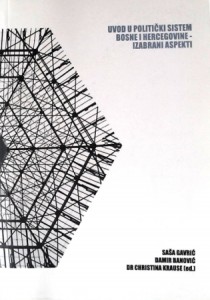
Prilog skicira rat vođen za Republiku Bosnu i Hercegovinu i prikazuje sklapanje mirovnog sporazuma u Daytonu. Analizira najznačajnije sadržaje odredbi Daytonskog sporazuma i pokazuje da njegove odredbe po pitanju demokratizacije, povratka izbjeglica i prognanika i procesuiranja ratnih zločina nadmašuju tadašnje odnose moći. Prilog opisuje implementaciju centralnih sadržaja mirovnog sporazuma koji će i sljedećih godina određivati politički diskurs u Bosni i Hercegovini.
More...
Prve političke stranke u našoj zemlji formirane su početkom prošlog stoljeća u vrijeme Austrougarske uprave u BiH i od tada možemo pratiti razvoj višestranačke demokracije u BiH. Prvo političko organiziranje u BiH odvijalo se na etničko-konfensionalnom principu. Ulaskom u Kraljevinu Srba, Hrvata i Slovenaca, nakon Prvoga svjetskoga rata, prekida se politčki subjektivitet BiH, te razvoj višestranačja u tom razdoblju na području naše zemlje nemoguće je promatrati izvan tadašnjeg opće-južnoslavenskog državnog konteksta. Nakon Drugog svjetskoga rata obnavlja se državnost BiH, ali se i uspostavlja diktatura komunističke partije uz zabranu osnivanja političkih stranaka. Nakon pada komunizma, 1990. godine, obnavlja se višestranačje u našoj zemlji, a zanimljivo je da su i tada baš kao i početkom XX. stoljeća najjače političke stranke formirane na etničkom principu. Razvoj višestranačja prekida rat koji je u BiH trajao od 1992. do 1995. godine. Nakon rata nastavlja se dominacija nacionalnih stranaka. Međutim, unutar sva tri nacionalna korpusa, odnosno sve tri nacionalne strankepokreta, već od prvih poratnih godina započinje proces diferencijacije i demokratizacije. Rascjepima u SDA, SDS-u i HDZ-u BiH nastaje niz novih političkih stranaka. Istodobno jačaju i multietničke stranke kao i stranke umjerenije orijentacije. Jednom započeti proces demokratizacije bio je nezaustavljiv, a kao potporni stup tek rođenoj demokraciji u BiH , uspotavljeni su i zakonski mehanizmi za pravično odvijanje izbornoga procesa, nadzor financiranja političkih stranaka te njihovu ovjeru za nastup na izborima. Svoj doprinos dao je i OHR kroz Bonske ovlasti, kojima je izravnim intervencionizmom u strukturu pojedinih političkih stranaka udaljio osobe koje su djelovale destruktivno na političkoj sceni, i tako ovim strankama omogućio profiliranje u moderne političke opcije lišene nacionalističkih ekstremizama.
More...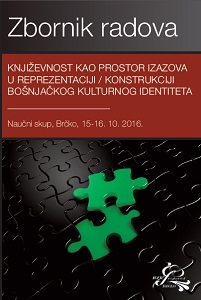
Answering the question of the importance of raising the question of Bosnian identity, cultural memory and representation in literature.
More...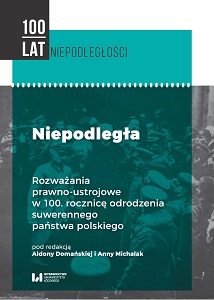







In the political tradition of Serbia there exist two paradigms which are popularly equated with personalities of the two historic leaders of the Serbian revolution - Karadjordje and Prince Miloš. Karadjordje serves as a symbol of hero and of revolutionary struggle, whereas Prince Miloš, on the other hand, is a symbol of statesman and diplomat. The problem lies in the fact that the two paradigms are regarded as contradicting each other, and that political manners of the Serbian people so far have shown that in the crucial moments of its history priority is given to the warlike archetype of Karadjordje, although the Miloš model would have offered a peaceful and diplomatic solution to political problems. The paper looks into the reinterpretation and revaluation of these models in the last decade of the 20th century as they were actualized once again due to the dramatic circum stances of Y ugoslavia’s desintegration with the ensuingarmed conflicts. Within the framework of the general retraditionalization, the contemplated models took up their position, albeit with a somewhat changed explication.
More...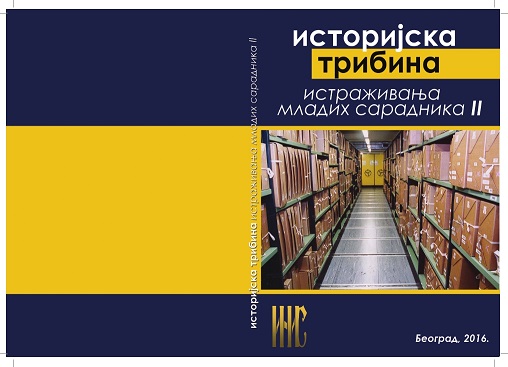
Yugoslavia’s nonaligned foreign policy during the Cold War was one of the main features of the country’s outstanding presence in the international arena. Recent Cold War studies, relying on new archival findings from all sides of this global conflict, tend to give more prominence to the role of lesser powers inside the international system. With the opening of the Yugoslav archives, this was also a noticeable trend in the domestic historiography too. Following these new scientific trends, this article strives to present recent findings from the major Asian archival institutions that could shed more light on the relevance of Yugoslavia’s interactions with the Third World and that could raise new research issues that these new findings might solve. Based on author’s personal experience, this article tends to present some of the most important archives and documents coming from China, India, and Myanmar, countries that nurtured specific relationship with socialist Yugoslavia at that time, adding thus new details and weight to the research done in the domestic archives. Therefore, some of these documents portray Yugoslavia’s all encompassing political, economic, and military presence among major Third World nations even more clearly and also underpin the country’s claims to relevance during the Cold War.
More...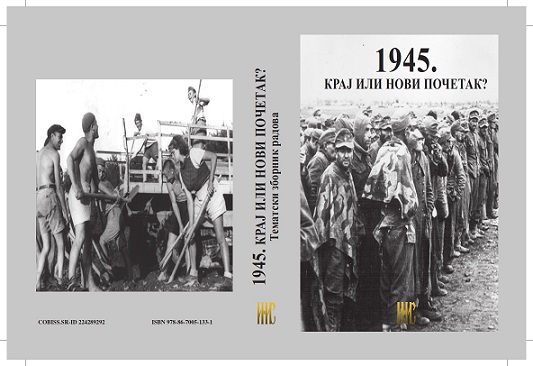
At the end of World War II and in the upcoming days a strong wave of repression and revolutionary terror followed in all the countries of Eastern Europe, so as in Yugoslavia and Serbia, through instrumentalization of antifascism for the purpose of eliminating revolution enemies. This terror was only partially motivated by war, "revenge ethos", even personal reasons, which necessarily follow almost all warfares in history. Larger part of this terror represented the first phase of well-planned communist revolution, whose aim was to gradually eliminate its class and political enemies. At first, it was done by liquidations without trials, directed by secret police. Later on, formed political trials, mostly under the accusation of war crimes or some kind of collaboration, took over.
More...